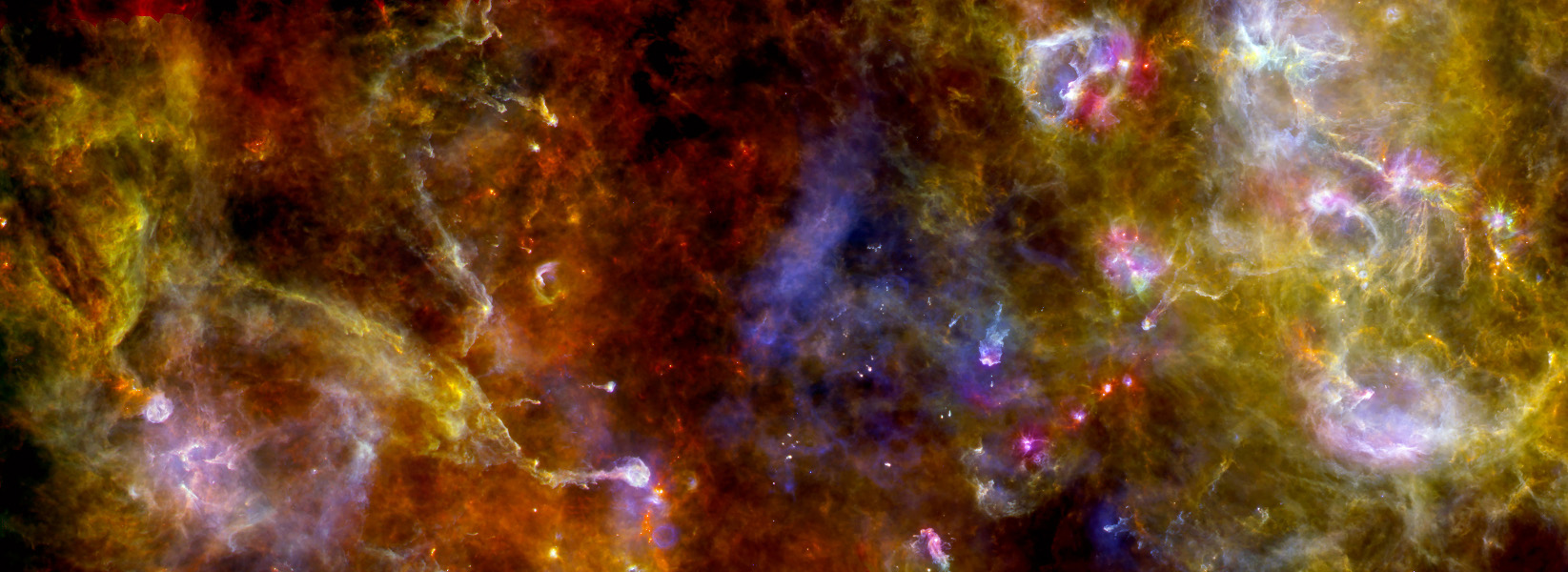MAY 17, 2012
Herschel’s Cygnus X
EXPLANATION
The Herschel Space Observatory’s infrared view of Cygnus X spans some 6x2 degrees across one of the closest, massive star forming regions in the plane of our Milky Way galaxy. In fact, the rich stellar nursery already holds the massive star cluster known as the Cygnus OB2 association. But those stars are more evident by the region cleared by their energetic winds and radiation near the bottom center of this field, and are not detected by Herschel instruments operating at long infrared wavelengths. Herschel does reveal the region’s complex filaments of cool gas and dust that lead to dense locations where new massive stars are forming. Cygnus X lies some 4500 light-years away toward the heart of the northern constellation of the Swan. At that distance this picture would be almost 500 light-years wide.
Credit
ESA/PACS/SPIRE/
Martin Hennemann & Frédérique Motte,
Laboratoire AIM Paris-Saclay,
CEA/Irfu—CNRS/INSU—Univ. Paris Diderot, France


